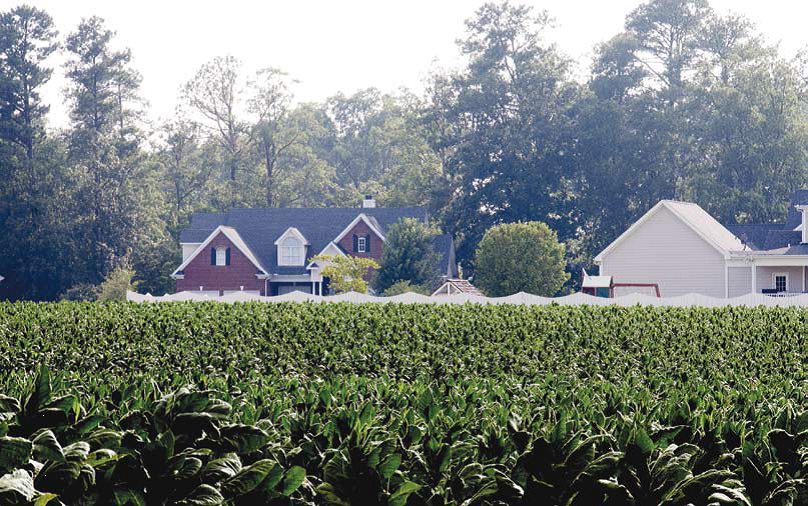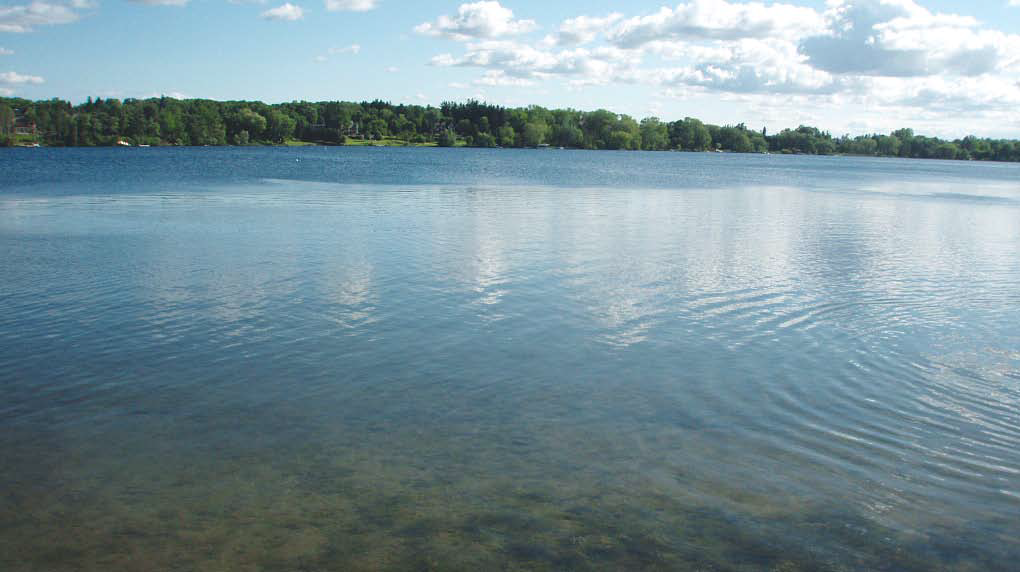By David Donnelly & Lia Magi Published in: Sustainable Builder Magazine, Special Showcase Issue 2011
Ontario is a world leader in setting boundaries for new Greenfield developments. Paradoxically, Southern Ontario is also attracting rapid population growth, requiring the construction of one million new homes that threaten thousands of hectares of prime farmland and wildlife habitat.
With costly and time-consuming land use battles between environmentalists, developers, and municipalities looming on the horizon, our firm was asked to provide a model for new Greenfield development.
Our clients, developers Mattamy Homes and OPDI, adopted a simple threshold challenge: “Environmentalists are very good at telling developers what not to build; let’s try inventing a sustainable community design we can all agree on.”
After one year of stakeholder consultations, we’ve produced a made-in-Ontario new Greenfield Sustainable Building and Community Design Standard (“Greenfield Standard”), with the goal of making it law in 2012. Recent examples, like the Greenbelt, Green Energy Act, and Lake Simcoe Protection Act, show that Ontario has the pedigree for leadership and decisive action to protect the environment and create good, green jobs.
Our proposed new Greenfield Standard is wonderfully simple: 1. Build new suburban communities at an urban standard. That is, use 55 per cent of the land for development, not the current 45 per cent that spreads development out too thinly; 2. Require new units to reduce energy and water consumption by 50 per cent from current standards; 3. Cap development levies on new lots/units at a target density (75 jobs and residents/hectare) and, 4. Extend tax incentive financing to developers that meet the Greenfield Standard thresholds.
European visitors to Ontario are often surprised by the amount of land we use up in creating new communities, for roads, lots, schools, and infrastructure. As visitors leave the lush, compact neighbourhoods of Leslieville, Parkdale, and the Annex, they’re left wondering why we require developers to surrender so much of their land for infrastructure, instead of building to the desired form of many of Toronto’s most successful and up-and-coming neighbourhoods.

Currently, developers must surrender 55 per cent of their land in “new town” plans, leaving only 45 per cent for commercial and residential buildings. This ratio has produced the widely spaced, poorly connected suburban developments that dominate the North American urban landscape. By building at a higher density and more compactly, we can use more land for housing and employment, instead of infrastructure. Building real communities with nearby employment makes for transit-dependent villages (where it’s better to take the bus) rather than transit- supportive villages, where the bus is merely another option.
In addition, simply by shrinking massive road right-of-ways and high-school yards, and cutting back on public infrastructure land consumption and unused greenspace to free more private land for development, developers can off-set most of the additional costs for introducing bio-swales, and district heating and cooling. Ontario’s antiquated habit of building grand boulevards (or heat islands) in residential areas to accommodate two oxen turning will need to be revised; the Greenfield Standard establishes targets for that.
Designing people-friendly streets requires building single-loaded roads adjacent to natural features and parks; reducing block dimensions, where no side is longer than 250 metres to encourage pedestrian activity; reducing road widths that adopt new lane designs and bike lanes; and adding green linkages. In addition, we need to treat clean water as if it were a valuable commodity, because it is.
Less than 50 per cent of the drinking water we use actually requires treating. Treating water is an expensive process, compared to reusing waste water. Watering lawns, putting out fires, and flushing toilets are some of the uses of water that can be better served by grey-water and rain water. The United Nations urges countries to “treat water to no higher quality than needed.” This makes a lot of sense in Ontario, particularly in urbanizing watersheds that do not have access to the Great Lakes.

Ontario’s Green Energy Act provides the right incentives for existing home-owners to “go green,” but does not require new communities to be net-zero energy consumers. Our standard does that, and it requires that LED street- lighting and zero-net energy should be required by 2017, along with making streets oriented north-south and lots east-west, in order to optimize southern solar gain and to minimize western solar heat gain to dwelling units.
At the building lot level, the one-tree-per-family allotment needs to be replaced with a 62-trees-per-hectare (25-trees-per-acre) standard, creating an urban canopy (over narrower roads). Water-guzzling lawns need to be replaced by drought-resistant xeriscaping, with nearby common areas and parks that encourage social interaction, rather than fenced-in isolation.
Locally sourced building materials, like sand and stone, can shrink the carbon footprint of construction, when compared to imported finished stone from China and India.
To level the playing field, so to speak, Greenfield Standard compliant communities should be allowed to finance the “green” elements of the design (e.g. storm water, district heating, and cooling, etc.), by leveraging the enormous long-term savings to the host municipality with tax incentive financing (TIF), and local improvement charges (LIC).
We need to act fast on this new standard. The Greater Toronto Area is consistently ranked in the top three fastest-growing communities in North America (according to the Neptis Foundation). Given our projected growth targets, maintaining the development of the status quo would consume more than 1,000 km2 of prime farmland in a little more than 25 years.
In Ontario, creating a new Greenfield Standard is not an academic exercise for some far-off time target. For example, in the coming weeks, new growth will be allocated in Simcoe County. The province projects the Simcoe Area will grow by nearly 230,000 residents, to a total population of about 667,000 by 2031, in addition to a forecast of 73,300 new jobs by 2031. Simcoe County has maintained Western union online that it needs even more population increases.
The environmentalists of Campaign Lake Simcoe broke the ice by requesting that future population allocation in Simcoe County be awarded only to communities built to a new, higher Greenfield Standard.
There are two additional benefits of proceeding with a Greenfield Standard collaboration.
First, both the development and the environmental communities are in the early stages of a changing of the guard, as the resource- hungry baby boomer generation begins retiring. Now is the perfect time to introduce closer collaboration between the current and the next generation of modern-era builders and environmentalists – groups that have been too long at each other’s throats.
And there’s reason for optimism. On June 1, 2011, our client Environmental Defence and Holcim Canada (and its Canadian affiliate Dufferin Aggregates) released a new green gravel standard for Ontario. Named Sustainable and Environmentally Responsible Aggregate, (nick-named “Green Gravel”), one of the primary purposes of Green Gravel is to offer environmentally conscious municipalities and consumers the ability to leverage their purchasing power and request responsibly sourced aggregate materials, including green cement and ready-mix concrete in new communities.
We can learn from the above example. The private sector and environmentalists can collaborate effectively in the land-use planning, and the community space and building design sectors to create sustainable communities.
Finally, there is another larger benefit to the implementation of the Greenfield Standard and allocating new growth-only in areas that meet or exceed its conditions. Rewarding sustainable development and community design over traditional urban growth decision-making will dispel much of the cynicism and mystery that normally follows the awarding of a new population allocation. These decisions too often appear to be the result of good lobbying or political expediency, not sustainability thinking.
Ontario has a tremendous record on which to build. Successive provincial governments have protected the Oak Ridges Moraine from further development, created a 1.8-million acre protected Greenbelt (the world’s best), and enshrined in the Places to Grow Act an intensification target of 40 per cent new growth in existing urban areas, versus 60 per cent growth in new Greenfield development.
Ontario is the birthplace of post-war, sustainable Greenfield suburban planning and design. Given the enormous development pressure we’re currently facing, it’s time for our builders, citizens, politicians, also environmentalists to lead again. As my wise oysterman friend often reminds me, “We all fish off the same wharf.”
David R. Donnelly, principal of Donnelly Law, is one of Canada’s leading environmental lawyers and advocates for smart growth. He has acted as legal advisor and counsel to Environmental Defence since 2000. Lia Magi is an associate at Donnelly Law, practising in the areas of environmental law, land-use planning, and litigation.

